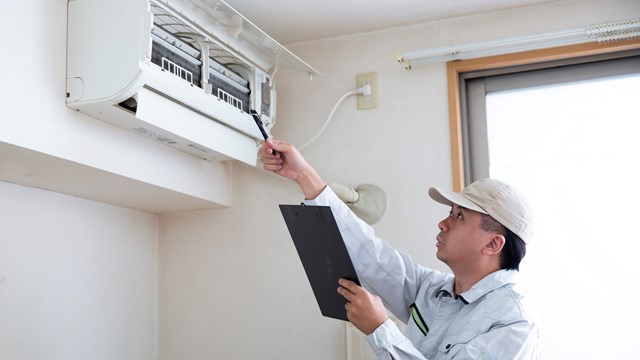Given all the big expenses condo, co-op, and HOA boards have to keep track of, smaller things, like boxes of cleaning supplies and other everyday maintenance items might seem secondary. But the truth is, neglecting those ‘little’ expenses can cost buildings big time. Keeping tabs on inventory isn’t just about being organized; it can help building managers, residents, and staff save time and money and reduce waste.
Organization is Key
One of the simplest ways to avoid waste and overspending on supplies is to keep track of what you have, and where it is. You may have six bags of ice melt on hand, but that isn’t much good if it’s been stashed behind a bunch of other equipment and forgotten. Disorganized or scattered inventory leads to loss through misplacement, damage, overordering, and even theft of supplies, which is why it’s so important to know what you’ve got on hand at any given time.
“A big thing in every building is making sure your on-site staff are keeping supplies organized,” says Piet Quackenbush, vice president of management for South Florida and New York-based property management firm AKAM. “For example, make sure all of your janitorial items are in one place. Have one supply room or area so you can see where everything is, and what you have stocked. When it’s not together, you can’t tell if you’re out of something, so you order it, only to find out you already had it. I think that’s where a lot of waste happens.”
Minimizing waste can help keep costs down, but just as important is making sure you work with vendors who provide high-quality items at the best price. Thriftiness is fine, say the pros, but not if it devolves into cutting corners and going cheap. New York resident manager Martin Robertson says, “You don’t want to waste by having to use more of a lower quality product. Sometimes, using the same distributor to make sure the quality stays the same is better than using a store that may use different distributors to send you stuff. Some things are worth paying more for to have that peace of mind.”
Is the Price Right?
In addition to shopping around and selecting quality items, taking advantage of bulk purchasing options can also help a building maintain its inventory and stay within budget.
While working with local vendors has its perks—including familiarity and supporting smaller, growing businesses—pricing may not be one of them. “Local vendors may not give a great discount or the best pricing,” says Quackenbush. “When you’re buying bulk through larger distributors, you can negotiate, and I think that’s a way to fight the pricing battle. If your pricing isn’t competitive, make that switch right away.”
Quackenbush continues, “The big thing that all management companies should be doing is having bulk agreements with vendors to get better pricing through economies of scale. It’s best to select one vendor and negotiate prices. If you have a preferred vendor or preferred pricing, you can save a lot of money—so have your resident manager use that vendor, and get your board onboard. ”
Along with cultivating relationships with individual vendors, shopping around is also a wise move, says Robertson, who advises casting a wider net to source the materials and supplies your building uses regularly. “When it comes to keeping supply costs down, it helps to get as many prices as you can from different distributors. We don’t do one-stop shopping,” he says. “That might be simpler and easier, but if you’re really trying to fine-tune your system, you may need to shop around. Currently, we utilize four or five different stores and direct distributors for ordering parts and supplies. There are certain items I order directly from one store, and others from another distributor. If there is a way to save and find a cheaper rate, then we have all of those options; multiple distributors, big box stores, and going directly to a manufacturer for parts.”
Taking the time to shop around doesn’t have to mean more legwork however, Robertson notes, “Because it’s all being delivered. I’ve found you can save a lot of money throughout the year using some of these services. Having an online account and credit card set up can help add on credit card points and give you more discounts and savings.”
Tracking With Tech
Maintaining and ordering supplies does take time in terms of shopping around for the best deals and maintaining accurate inventories, but newer technologies come in handy for making the task more efficient and often more cost-effective. “As much as we can automate, we do,” says Robertson. “Certain online stores are great for that, and you can adjust it back and forth if you need. As you place orders, you get a good idea of how frequently you need to have certain things.”
Automatic reordering can streamline this process, and many retailers offer discounts for ‘subscriptions’ that auto-ship items a specified interval, but Quackenbush cautions that automatic reordering has its drawbacks. “I’m not crazy about that because anytime you put something on autopilot, you can lose control,” leading to overordering and unnecessary redundancy. To avoid that, he says, “Manual deliveries are important to help train your supers to track items.”
For larger buildings or HOAs where it’s impractical to have a super or custodian track inventory and reorder supplies manually, management software with digital tracking functions can help everyone stay on the same page more easily. Quackenbush’s firm uses popular property management platform BuildingLink, for example. “[The software can] tell you when you are getting low on something, or when something needs replacing,” he says. “It also generates a history, which is so important, because then you can easily tell if you are replacing a certain component too often,” If a part is frequently in need of replacement, or a product is running out too quickly, having a close eye on it can alert managers and supervisors to the issue and get it resolved more quickly.
Robertson agrees: “We use BuildingLink to track our inventory daily. We put everything into the system, and you’ll be notified if certain items drop below a set level.” He notes that even with technology, the human component is still very necessary for maintaining an accurate inventory. “You need to make sure you are putting items into the system when you get them, but also taking them out of the system when you use them. If you don’t take the items out, your inventory will always be off.”
Robertson goes on to say that if a building doesn’t use BuildingLink or a similar software system, inventory and ordering history can still be organized and tracked with spreadsheets that load information and check boxes, such as GoogleSheets. “I like GoogleSheets because it creates a link you can share with board members, property managers, or anyone else requesting information,” he says. “If you have a really good relationship with your supplier, you can even share it with them, and they can collaborate to help you stay on top of managing supplies.”
Collaboration is Key
Any staff member in your building who uses supplies should be involved in keeping track of them, says Quackenbush. “Real-time manual inventory is best. You have to train your onsite managers and property managers to look at every order. Don’t be afraid to question it if you see anything out of whack, like pricing.”
Having a well-organized manual and/or digital tracking system in place also helps forecast seasonal needs and track compliance, which is helpful in reducing costs. “Think about what you will need ahead of time so you don’t need to run next door to borrow ice melt as soon as it gets cold,” says Robertson.
On-site managers or staff supervisors should also act as a check and balance against loss and excessive spending by regularly looking over inventory and expense records, ordering histories, and by physically checking that storage areas for supplies and equipment are neat, organized, and secure, says Quackenbush. “Boards tend to give their on-site management a lot of autonomy; it’s our job to do quality control to make sure they’re taking advantage of discounts they could get. Managers need to stay on top of any kind of code changes or bulk orders because there can be delays receiving things. Supply chains are worse post-COVID, and now with tariffs, too.”
He adds that “The on-site people are the boots on the ground, so they have a different perspective, but we all work collaboratively.”
Robertson agrees that the key to a well-run system is collaboration, stating, “We work together with a team of about 15 [supers] and porters, and they log everything. We train our concierge team, especially those on the overnight shift, to balance the books during periods of downtime. We give them the receipts, and they can review them during their downtime to balance what the porters have brought in for orders against what the invoices note. Once a month, I’ll review the entire sheet one by one. It’s nice only to have to place an order once a month, so conducting a monthly audit is also smart.”
Investing the time and energy upfront can save the building and its employees time and money in the long run. “Sometimes, prices go up without you being notified, and if you aren’t paying attention, all of a sudden you are off budget,” says Robertson, “If you’re paying attention, you can always renegotiate prices quickly.” Managing building supplies is an intentional task that requires daily oversight. Roberston adds: ”You can’t leave supply ordering to fate because you will bleed. You’ll end up overstocked and wasting money.”
Kate Mattiace is associate editor of CooperatorNews.










Leave a Comment